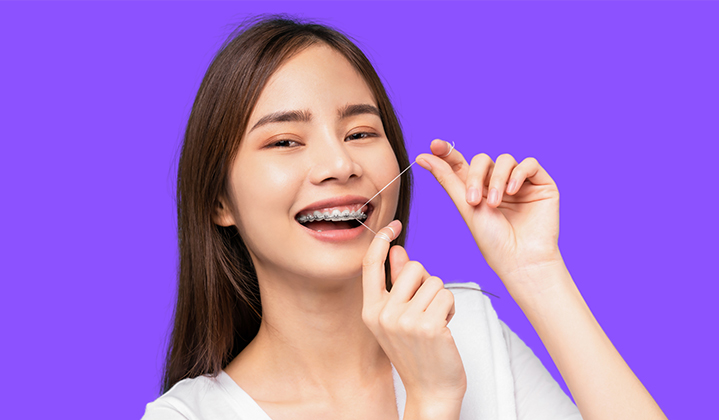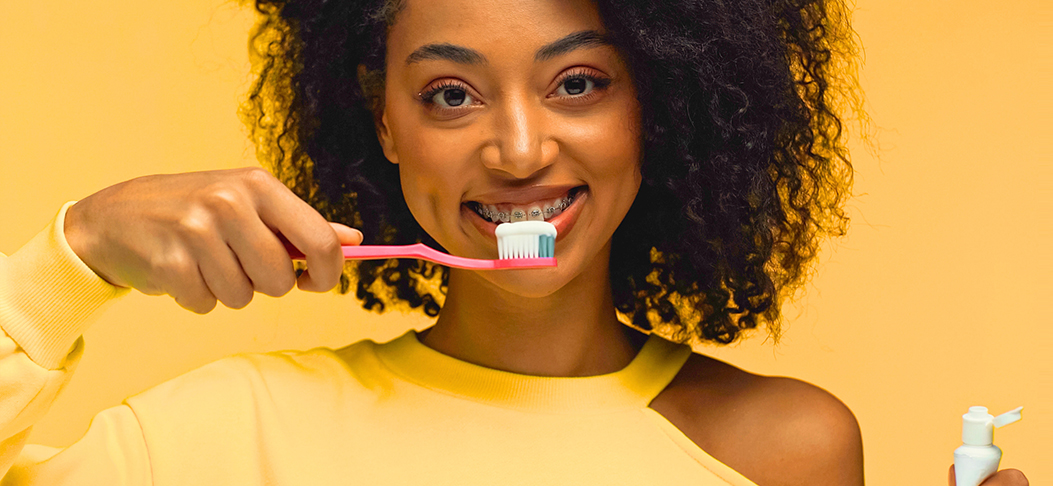
The how-to on brushing with braces
Teeth brushing with braces throughout the day is more important than ever before. Brushing with braces is easy, but it takes getting into a routine. It’s best that you brush your teeth at least three times a day, preferably after each meal.
We recommend that you not use whitening products since you won’t be able to whiten the entire surface of the teeth while wearing braces/Invisalign attachments.
Below we’ll provide you with a quick guide on brushing with braces!
5 Easy Steps on Brushing with Braces
This is the front side of your teeth that is seen when you smile. Don’t forget to remove the plaque along the part of your tooth closest to the gum line.
Begin on the outside of your bottom teeth. Bite your teeth together. Rub the toothbrush back and forth across your teeth while gradually moving the toothbrush across your bottom teeth. Make sure you reach all the way back to your molars. Spit if necessary.
Now brush the outside of your top teeth. With your teeth still together, gently brush in circular motions. Make sure you move the toothbrush across all your front teeth and back to the outsides of your molars as well. It may be easier to reach the back of your mouth if you open your mouth a little.
If you are using a regular toothbrush, you will want to slant the brush both towards your gumline and toward the top of your tooth as well. This helps dislodge any food particles stuck directly on the top or bottom of your brackets.
You can also use your interdental brush to brush over the tops of your brackets. Most brackets have holes in them (very hard to see) so try wiggling the interdental brush down into each bracket.
Move the toothbrush back and forth, up and down and then with circular motions on the inside of your top and bottom teeth. When you have braces, the inner side of your teeth are usually the easiest to brush because they are not crowded with braces.
Turn your toothbrush perpendicular to the spaces between your teeth. Rub the brush back and forth and also use a circular motion. This helps get the hard to reach crevices that can harbor plaque and food particles.
Your mouth is full of germs and plaque that feed gingivitis. You need to brush and massage your gums, cheeks and tongue as well. Spit if necessary before you begin.
Using your toothbrush, start to gently brush the gums above (or below) your teeth. Do a gentle, vertical brushing in the direction of the brackets.
After this, turn the brush 180 degrees to face your cheek. The cheek is harder to brush. Secure it with your other hand if it gets too difficult. Spit.
Turn the brush downwards and brush the soft bottom and gums where your tongue lays. Brush underneath your tongue, and then the roof of your mouth.
Finally, stick your tongue out and brush it. Be sure to breathe out of your mouth, otherwise you’ll start gagging. Spit and rinse your mouth and toothbrush.
If you see any plaque or food, take your rinsed toothbrush and brush it away. If you feel like it, brush them over (any way you’d like) really quickly to get rid of anything you might have missed.

